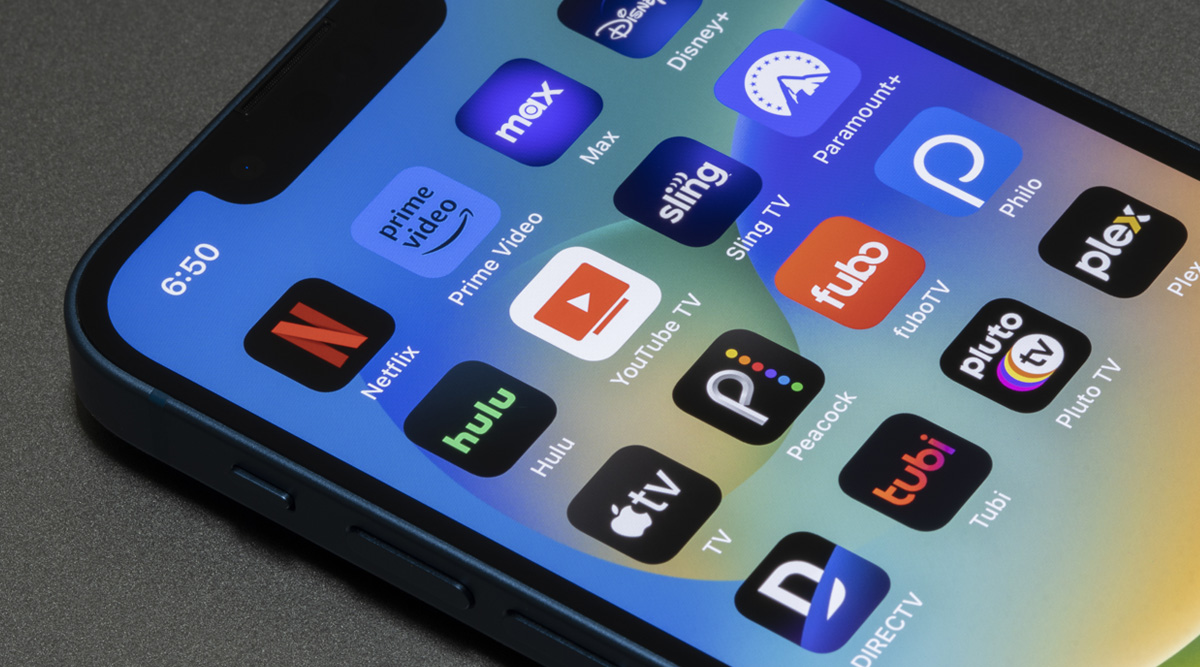FAST Forward: Why local stations must embrace free ad-supported streaming

Subscribe to NewscastStudio for the latest news, project case studies and product announcements in broadcast technology, creative design and engineering delivered to your inbox.
The traditional television broadcasting model is undergoing a massive transformation. Cord-cutting, once a niche trend, has become a tidal wave sweeping the industry, changing how content is consumed and monetized. No matter the genre, viewers are looking for (and finding) new ways to consume content across news, sports and entertainment.
While this wave of change disrupts established patterns in the broadcast world, it presents a golden opportunity for those who are adaptable and forward-thinking.
Enter free ad-supported streaming television, one of the hottest trends in broadcasting today.
For those questioning the potential of FAST, look no further than the deluge of recent market data and surveys showing the rapid rise of these services. Then consider the rapid rise in revenue, which is expected to reach $12 billion in 2027.
Similarly, services have also seen their valuation sore, with Fox turning down a $2 billion offer its FAST platform, Tubi.
So why should local broadcast stations, such as NBC, ABC, and CBS affiliates, venture into the realm of FAST?
Follow the shifting viewership
Perhaps the most compelling reason to venture into FAST is the clear shift in audience behavior. As consumers experience subscription fatigue, many are shifting towards free platforms that offer a more “cable-like” experience with curated channels and live offerings instead of the vast, endless scroll of Netflix.
Nielsen’s June 2023 The Guage report noted nearly 40% of views now come from streaming, with traditional broadcast down to only 20%.
A report from Ampere Analysis supported The Gauge and found that nearly half of viewers watch little to no linear television on a typical day.
For local broadcasters, this is an invitation to adapt their traditional free, ad-supported television model to meet the audience in the new spaces they are flocking to.
The content is there already
As broadcasters continue to increase their minutes of news content, the task of filling a streaming schedule becomes significantly less daunting. However, this increase in news output does not merely serve to populate the content schedule. It also represents a fundamental shift in local broadcasting, broadening its scope and opening new doors for growth. This is especially pertinent in the FAST world, which is currently underserved by local offerings.
Local stations currently constitute a relatively small portion of the total number of FAST channels. But, within this reality lies a unique opportunity. The scarcity of local content on these platforms translates into an untapped market, a growth prospect that extends far beyond merely broadcasting newscasts.
In addition to newscasts, stations have at their disposal an extensive archive of content ready for repurposing. This trove of ‘idle’ content can be transformed into evergreen offerings, breathing new life into the material and providing variety to the viewers.
Moreover, operating within the FAST environment offers an additional advantage: the freedom to break away from the conventional constraints of the broadcast day. There is more room for creative experimentation, for testing new formats and offerings. This flexibility empowers journalists to tell deeper, more complex stories – stories that may not fit into the mold of a traditional evening newscast.
And of course, there’s the inherent nature of news itself – it’s always breaking.
This continual cycle of evolving stories and developments presents a natural content generator, offering a steady stream of material to populate a FAST channel’s programming. As demonstrated by platforms like LiveNOW from Fox, breaking news can become a compelling and consistent feature, keeping viewers engaged and updated while filling significant airtime on FAST platforms.
A revenue catalyst
As we enter another election cycle, local stations must not overlook the vast opportunities for revenue growth that a FAST channel can provide. As competitors establish their brands and secure their market positions, the risk of falling behind by resisting change looms larger than ever.
Media agency Magna anticipates a significant shift in ad spending, with a 21.2% rise in spending on FAST and AVOD platforms in 2023, even as the overall ad market is forecasted to potentially decline. These figures underscore the increasing relevance of these platforms in the broader advertising ecosystem.
Some attributes make FAST platforms attractive to advertisers and potentially easier for a local station sales team to monetize. For one, the nature of the platform guarantees a larger viewing format. As the apps are usually downloaded onto connected televisions, advertisers can rest assured that their ads will appear on larger screens, potentially offering a more immersive viewer experience than on smaller screens.
Moreover, advertisers can place their messages in thematic environments that align with their brands.
One of the inherent advantages of FAST channels is their relatively uncluttered advertising environment, with only four to eight minutes of ads per hour compared to 12 to 17 minutes of advertising per hour on traditional TV.
This significant difference in ad load suggests a less cluttered and more viewer-friendly environment on these platforms. The reduced ad load can enhance viewer experience and potentially improve ad recall and engagement, thus presenting a win-win situation for both viewers and advertisers.
How should you implement FAST?
Indeed, the exact approach to incorporating FAST into your broadcasting strategy will vary significantly from station to station. Every vendor in the market has a unique method for tackling this burgeoning sector. While a one-size-fits-all approach is unrealistic in this dynamic space, there are some broad strategies and considerations to keep in mind:
- Prioritize Content: A well-considered content mix can make or break a station’s FAST strategy. For some, live content will be the primary draw, particularly when it comes to broadcasting breaking news or other timely events. For others, recycled content, such as archived shows or previously aired specials, will form the bulk of their FAST programming.
- Consider Collaboration: Building partnerships can help fill out content gaps and ensure a product that’s more than just rolling news. Local sports? Foodie programming? There are endless options.
- Consider the Tech Stack: From robust platforms to advanced data analytics tools, the technology you choose will significantly impact the delivery, long term costs and overall success of your strategy. Do you have key vendors already involved with something like cloud playout that can easily be adapted for FAST or do you have to build from the ground up?
- Experiment: Tweak the content mix, experiment with new advertising strategies or adopt new technologies. Remember, the successful implementation of a new platform for distribution is a marathon, not a sprint. It involves constant learning, adapting and improving to stay competitive in this rapidly evolving landscape.
Local broadcasters must look beyond traditional boundaries and think about how they wish to remain relevant as viewers continue to adopt new platforms and leave the cable box behind.
Streaming offers affiliates an opportunity to expand their audience reach, tap into new revenue streams and provide more comprehensive local coverage – while also looking future-focused. As technology continues to evolve and consumer behaviors shift, the local stations that adapt will be the ones that thrive in this rapidly changing landscape.
Subscribe to NewscastStudio for the latest news, project case studies and product announcements in broadcast technology, creative design and engineering delivered to your inbox.





tags
Advertising, Broadcast Monetization, content, FAST, Free Ad Supported Television (FAST), streaming, Streaming OTT, tv viewership
categories
Broadcast Industry News, Heroes, Local News, Streaming, Thought Leadership, Voices